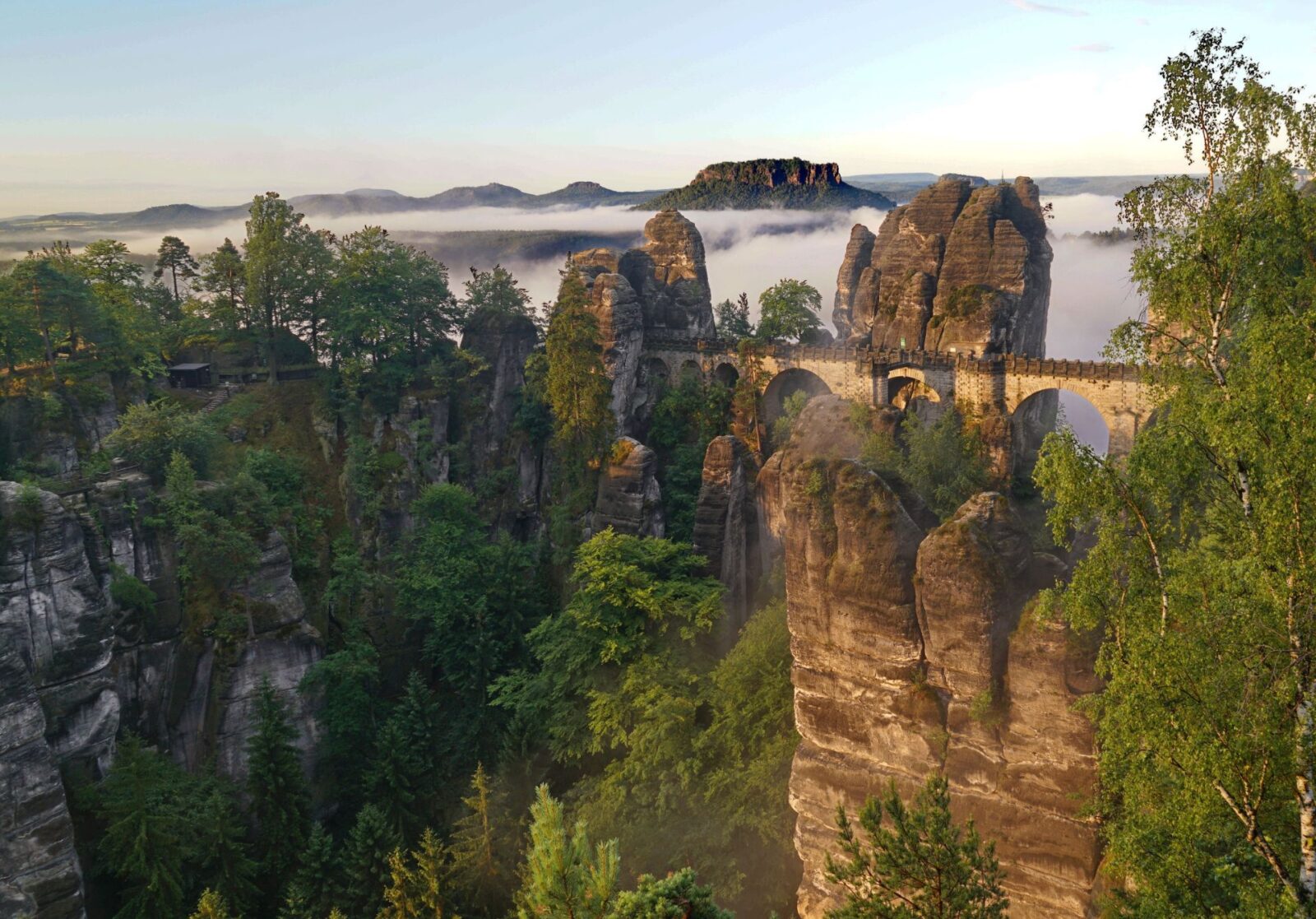Nestled in the northwestern corner of the Czech Republic, Bohemian Switzerland National Park (České Švýcarsko) stands as a testament to nature’s artistic prowess. Established in 2000, this 79 square kilometer paradise showcases dramatic sandstone formations, deep gorges, and pristine forests that have captivated visitors for centuries.
Geological Marvels
The park’s most distinctive feature is its remarkable sandstone formations, created over millions of years through erosion. The crown jewel is Pravčická brána, Europe’s largest natural sandstone arch, spanning an impressive 26.5 meters wide and reaching a height of 16 meters. This iconic formation has become not just a symbol of the park but of the entire Czech Republic’s natural heritage.
The Story Behind the Name
Despite its location in the Czech Republic, the park’s unusual name originates from Swiss artists who visited the region in the 18th century. They were so struck by the landscape’s similarity to their homeland that they dubbed it “Bohemian Switzerland,” a name that has endured through the centuries.
Flora and Fauna
The park’s diverse ecosystems support a rich tapestry of life:
Plant Life
The park hosts over 1,000 plant species, including rare orchids and ancient ferns. The mix of continental and mountain species creates unique botanical communities, particularly in the humid gorges where specialized moss and lichen species thrive.
Wildlife
Notable residents include:
- The Eurasian lynx, which returned to the area in the 1970s
- Over 100 breeding bird species, including the black stork and peregrine falcon
- Various bat species that find shelter in the sandstone crevices
Tourist Attractions and Activities
Hiking Trails
The park features over 100 kilometers of marked hiking trails, ranging from easy walks to challenging climbs. The most popular route is the Gabriela Trail, leading to Pravčická brána, offering spectacular views of the surrounding landscape.
Edmund’s Gorge
This stunning river canyon allows visitors to explore via punt boats, a tradition dating back to 1890. The guided tours provide unique perspectives of the towering sandstone cliffs and rich riverside vegetation.
Conservation Efforts
The park faces several conservation challenges:
- Managing increasing tourist numbers (over 600,000 visitors annually)
- Protecting fragile sandstone formations from erosion
- Preserving endangered species habitats
Park management has implemented various measures, including:
- Restricted access to sensitive areas
- Educational programs for visitors
- Collaboration with neighboring German Saxon Switzerland National Park
Practical Information
Best Time to Visit
The park is accessible year-round, but peak season runs from May to September. Spring and autumn offer milder temperatures and fewer crowds, ideal for hiking and photography.
Getting There
The nearest major city is Děčín, with regular bus and train connections to Prague (90 minutes). Several villages within the park serve as starting points for various trails.
Cultural Impact
The park’s dramatic landscapes have inspired artists and filmmakers for generations. Most notably, scenes from The Chronicles of Narnia: The Lion, the Witch and the Wardrobe were filmed here, showcasing the park’s otherworldly beauty to global audiences.
Bohemian Switzerland National Park represents a unique confluence of natural beauty, geological wonder, and cultural heritage. Its towering sandstone formations, diverse ecosystems, and rich history make it an essential destination for nature enthusiasts and casual visitors alike. As the park continues to balance tourism with conservation, it stands as a model for sustainable natural preservation in Central Europe.
The park’s significance extends beyond its borders, serving as a crucial link in the European ecological corridor and demonstrating the importance of cross-border cooperation in environmental protection. For visitors seeking an authentic experience of Central European wilderness, Bohemian Switzerland offers an unforgettable journey through one of the continent’s most remarkable landscapes.
 Vacation Rentals in CZ
Vacation Rentals in CZ